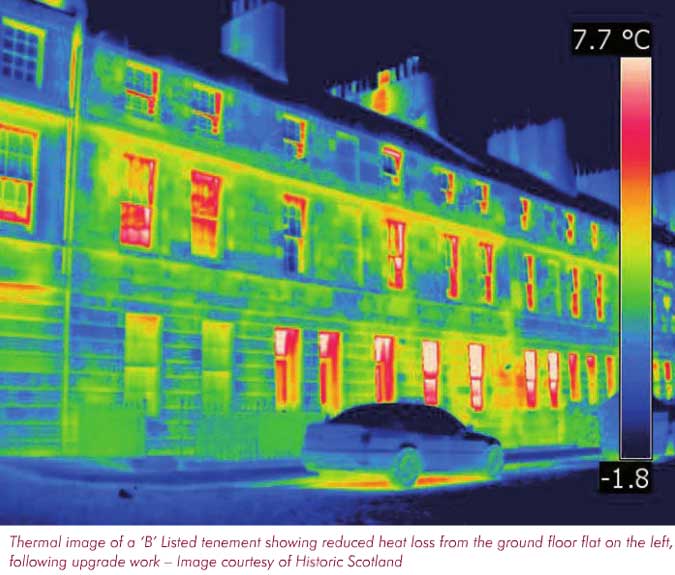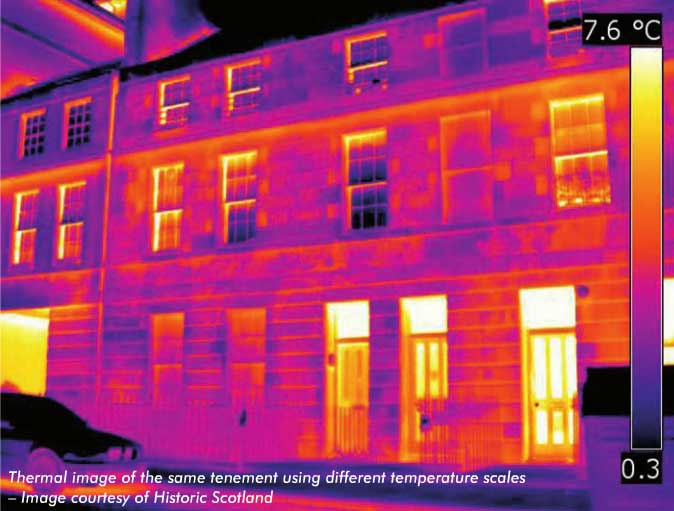Green Deal and traditional buildings
 The UK has committed to an 80% reudction in CO2 emissions by 2050. The regular revision of Part L of the Building Regulations will help the UK achieve its targets for new houses but the realisation that most of the building stock in 2050 is already built has turned attention towards our existing houses and offices - and in particular the older housing stock which is rightly seen as, in general, being far less energy inefficient than the most recent housing stock.
The UK has committed to an 80% reudction in CO2 emissions by 2050. The regular revision of Part L of the Building Regulations will help the UK achieve its targets for new houses but the realisation that most of the building stock in 2050 is already built has turned attention towards our existing houses and offices - and in particular the older housing stock which is rightly seen as, in general, being far less energy inefficient than the most recent housing stock.
The potential for reducing emissions (and for saving money) from solid walled buildings is very considerable. Analysis of the latest published English House Condition Survey (EHCS) (2007) data shows that 4.77 million dwellings in England (21.5% of English stock) were built pre-1919 and it is likely that the proportion in the rest of the UK is higher.
The current average SAP rating of the pre-1919 stock is 40 (a low E rating on the Energy Performance Certificate (EPC) scale) and approximately 10 SAP points below the stock average of 50 and 50 points below a new build meeting Building Regulations (a B on the EPC scale).
It is recognised that around 35% of heat from dwellings is lost through solid external walls. Improving the thermal performance of this type of wall is therefore important. The majority of new buildings have cavity walls, but many older buildings (i.e. pre-1920) are constructed of solid brick or natural stone and these present a particular challenge when it comes to improving the thermal performance of the building as any improvements are likely to change either the appearance of the building or reduce the useable internal space.
 However, for many the interest in the refurbishment of buildings is a response to a requirement and desire to improve the living conditions in many older houses - to be warmer, feel safer and be more comfortable.
However, for many the interest in the refurbishment of buildings is a response to a requirement and desire to improve the living conditions in many older houses - to be warmer, feel safer and be more comfortable.
Any reduction in emission of green-house gases happens as an added bonus and only rarely because we want to mitigate the effects of global climate change.
To help stimulate the update of energy efficient measures in the existing housing stock the Government has launched the 'Green Deal' scheme. The Green Deal is the new government initiative that is designed to help business and home owners to improve the energy efficiency of their property with the costs paid back through your energy bill over a period of time.
the 'golden rule' of the Green Deal is that the expected financial savings must be equal to or greater than the costs attached to the energy bill.
The key to the government's thinking is that the building stock in Britain needs to be properly insulated. Once the buildings are properly insulated, occupiers will spend less money on heating them and so be able to repay the initial financial outlay. But many involved with the care of traditional houses and buildings are concerned that the incentive provided by the Green Deal will lead to 'improvements' that are inappropriate and may be damaging to the building in the long term.
The potention problems originate from a combination of lack of experience of the particular needs of traditionally constructed houses amongst the assessors, installers and finance providers, and uncertainty that the energy models used to predict savings are good predictors for solid walls buildings.
 The key to improving energy efficiency of traditional buildings is to take a whole house approach and to have a good understanding of the way that heat and moisture move through the fabric of the building and are likely to impact on the materials used in the construction - particularly timber in the roof, walls, windows, doors and floors. This means taking into consideration the type of house, then looking at all appropriate energy efficiency measures, then examining renewable energy options and including water and waste reduction measures.
The key to improving energy efficiency of traditional buildings is to take a whole house approach and to have a good understanding of the way that heat and moisture move through the fabric of the building and are likely to impact on the materials used in the construction - particularly timber in the roof, walls, windows, doors and floors. This means taking into consideration the type of house, then looking at all appropriate energy efficiency measures, then examining renewable energy options and including water and waste reduction measures.
There are many simple improvements, such as draught proofing, that can be made, but the available evidence indicates that for solid walled dwellings to achieve significant CO2 savings then improving thermal performance of the external walls needs to be included in the plans. But the potential benefits from installing internal or external insulation needs to be considered along with the planning constraints, the potential impact on the fabric of remedial works and the need for a wider range of repairs and a planned maintenance programme during and after any intervention.
The Green Deal offers a great opportunity to improve the thermal performance of many traditionally constructed houses but those responsilble for them and those responsible for any improvements need to remember that these buildings may be different from more modern buildings. And that in looking to make changes the needs of these buildings must be considered so that they will remain part of our building heritage for future generations.
By Tim Yates, Technical Director, Building Research Establishment
www.bre.co.uk















